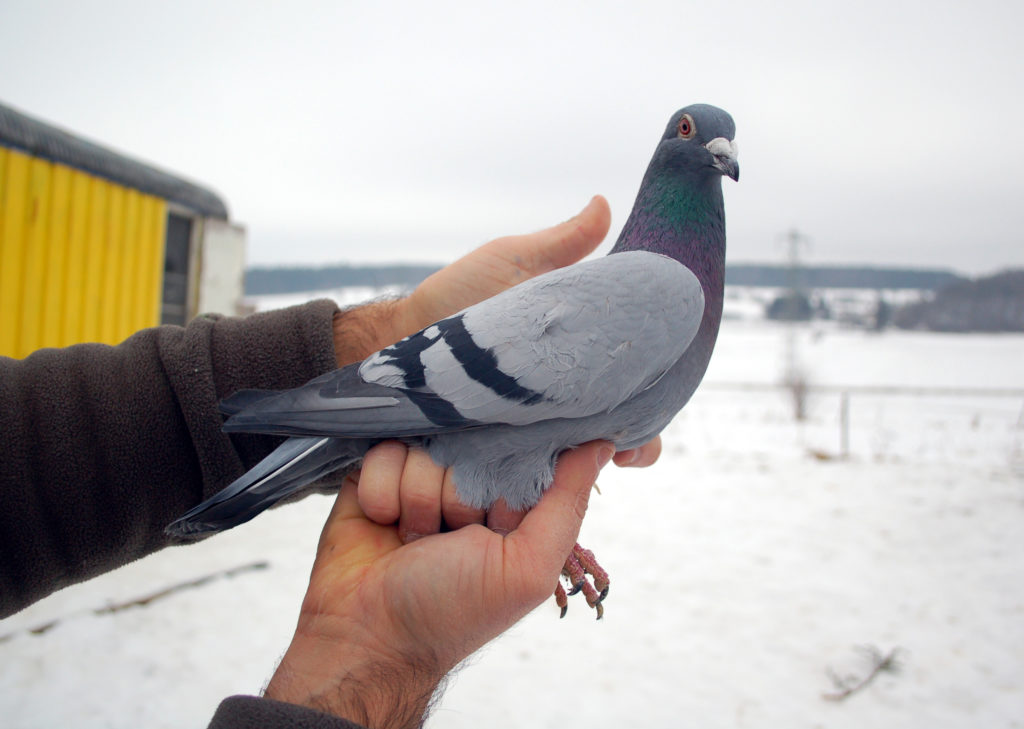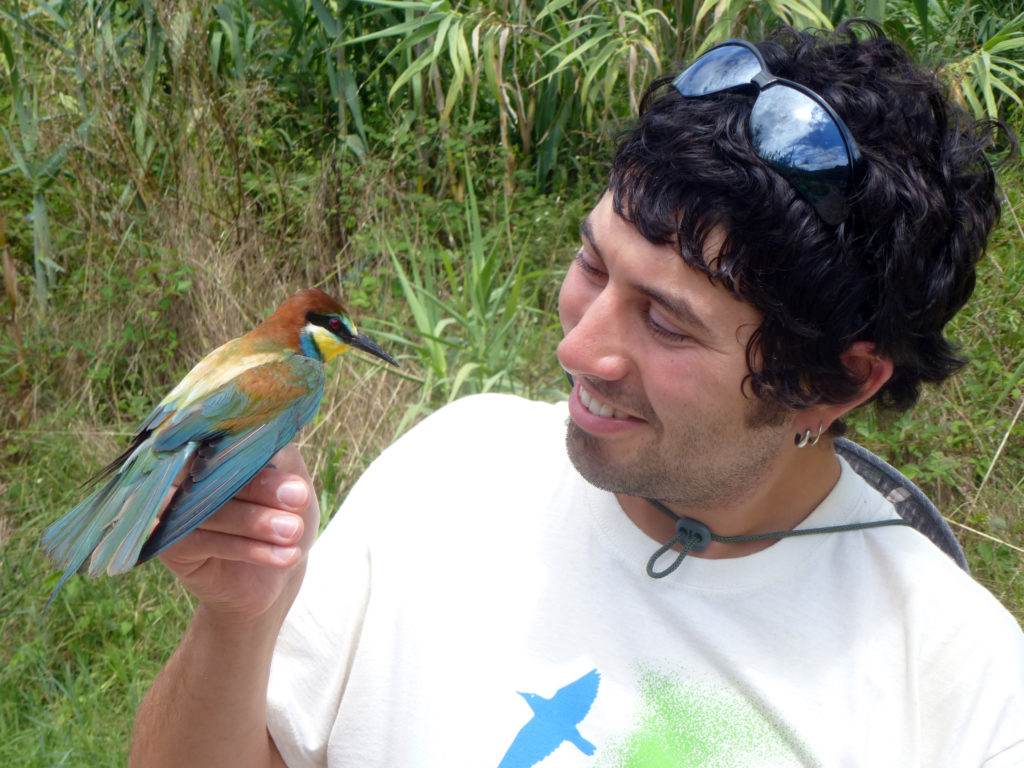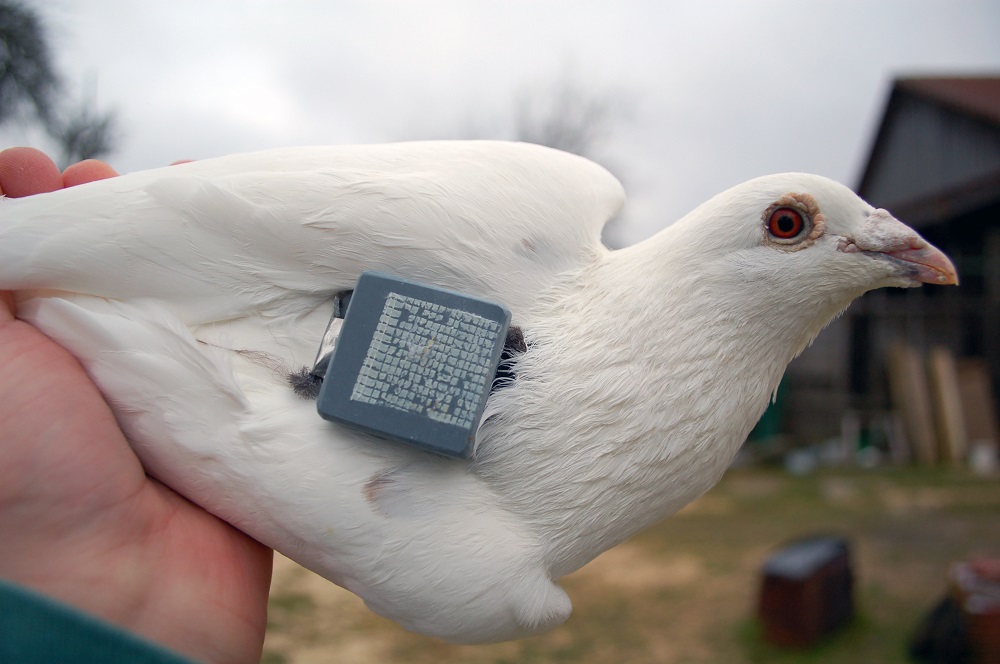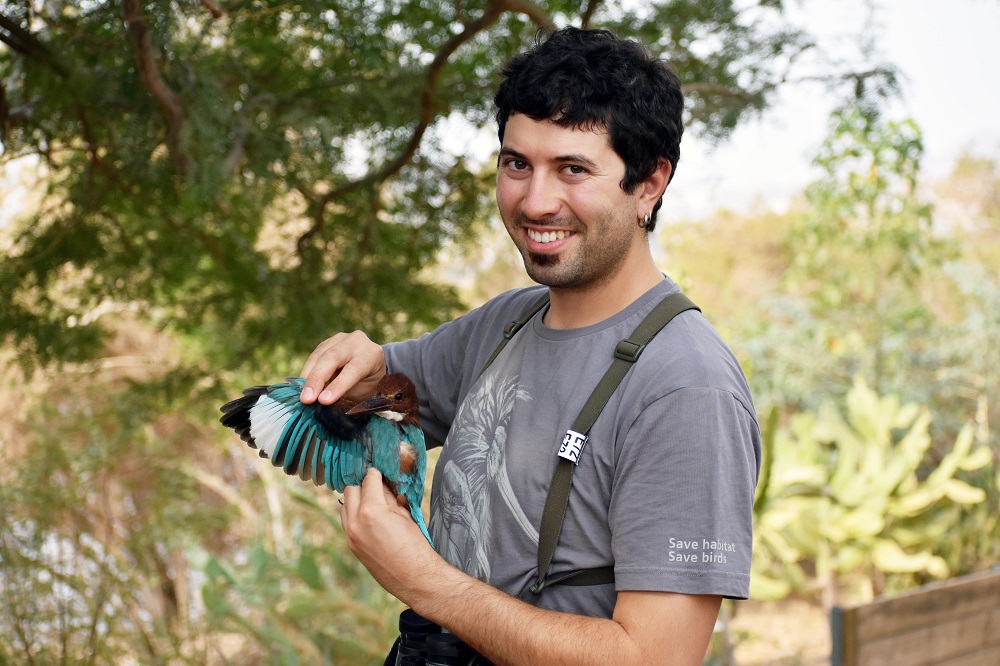The molecular birdwatcher from birds’ paradise
One who comes from the Mecca of European birdwatchers, may choose just one job: ornithologist. More precisely, a scientist, who deals with questions about the migration behavior of raptors, the personality of homing pigeons, the cooperative breeding of European Bee-eaters and the DNA of the Red-backed Shrike.
Liviu Parau grew up in Europe’s second largest delta area. Where the Danube flows into the Black Sea, Liviu’s home region extends in the Danube Delta biosphere reserve, covering 5,800 km². Nearly two thirds of the delta are protected conservation areas, with the biggest part in Romania and a smaller part over the border, in Ukraine. Together with Bulgaria and Moldova those two countries committed themselves to safeguard and conserve the wetlands along the lower Danube. They aim to preserve the world’s largest coherent reed beds as shelter for the impressive pelican population and for numerous other bird species in the long run.
The nature conservation organization WWF called this a gift to our planet.
Which part of the Danube Delta in his home country Romania is the most beautiful one is hard to tell for Liviu. After all, every corner encompasses an unbelievable variety of wildlife. If Liviu has to name some areas his favorite ones are the lakes around Maliuc and Mila 23 as well as the coastal regions in Sulina and Sfântu Gheorghe.
Out of 5,200 wild animal and plant species in the delta there are 362 bird species registered. The majority of the birds nest in the delta, but several are just migrating, using the delta as stopover site to replenish their energy reserves. Among the bird species, Liviu names a clear favorite, the Red-breasted Goose, which visits the area only in winter. Furthermore, he is still impressed by the iconic symbol of the Danube Delta biosphere reserve, the White Pelican with a number of about 15,000 birds and the roughly 700 Dalmatian Pelicans.
AN INTERESTED, OPEN-MINDED PERSON LIKE LIVIU INEVITABLY DEVELOPED A DRIVE FOR DISCOVERY HERE AND THE QUEST TO LEARN MORE ABOUT ANIMAL BEHAVIOR.
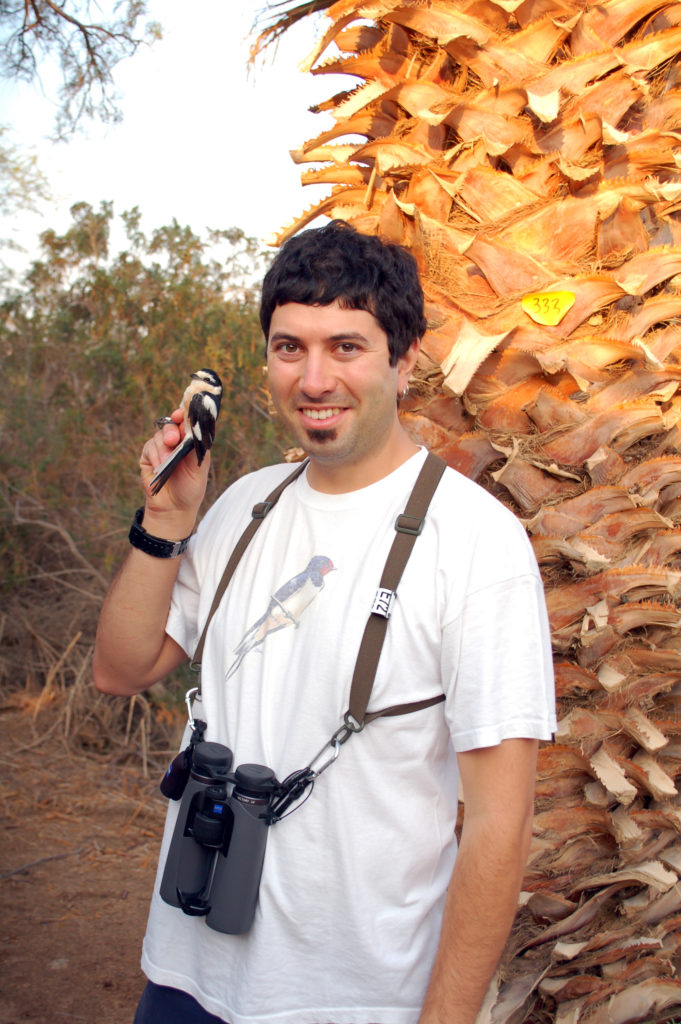
A somehow predestined scientific career
As a child, Liviu Parau spent many summers at his grandparents’ farm, taking care of the animals. Later in his teen years he spent lots of time after school in the large delta wetlands searching and documenting everything that flies. The love for animals is deeply rooted in his DNA, says Liviu. His father is an animal husbandry engineer and his mother studied veterinary science.
In a region where ornithologists continuously map new bird species it was just a natural choice to deal more extensively with birds. So Liviu joined the local birdwatchers’ club in Tulcea at the age of twelve. Studying biology was just a logical next step.
During this phase of life, he was mainly attracted to raptors and so for his bachelor degree he decided to collect field data about their migration behavior.
Driven by the desire to decode their decision to migrate, Liviu researched the influence of weather conditions and the local geography. He also dealt with the new threats along their flyways, like wind farms and what measures could protect the birds. Raptors migrate using up-lifting thermal currents. This helps them to go down south without using their own energy, basically hitchhiking from one current to the next. In Europe, the main threat for migrating raptors are windfarms. Collision with the turbines could be reduced by keeping windfarms away from migration flyways and temporarily shutting down problematic turbines.
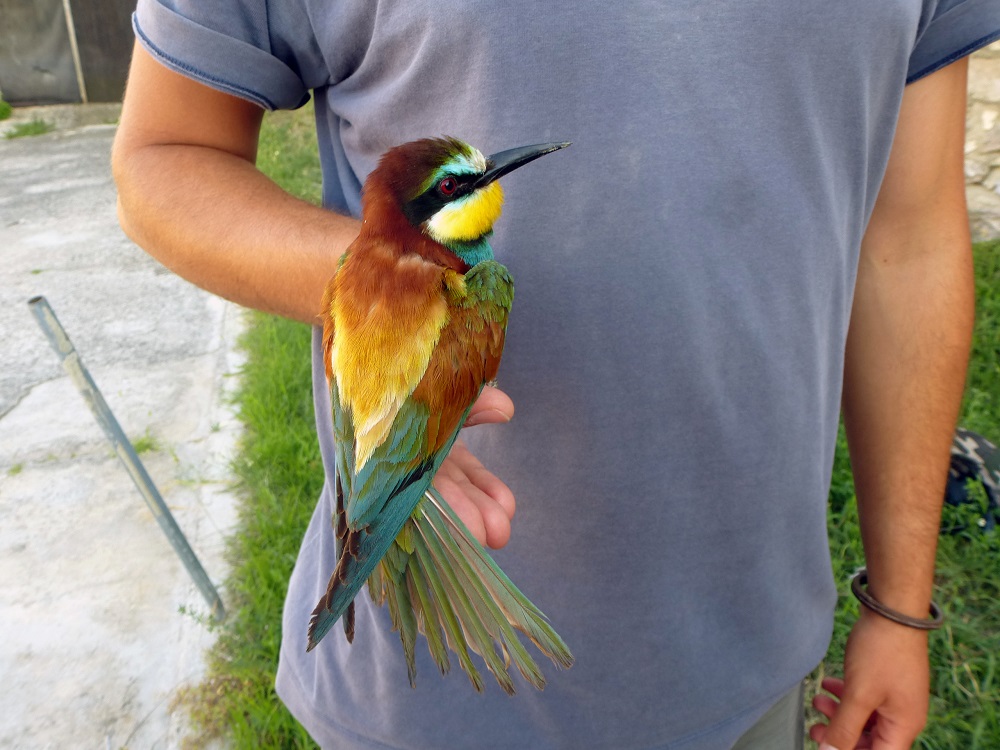
Despite his close attachment with the fascinating Danube delta, Liviu left his homeland to follow his passion for research. At least he was close to the water during his Erasmus scholarship, as his master’s degree project led him to Konstanz University and to the Max Planck Institute for Ornithology in Radolfzell, at beautiful Lake Constance. The topic of this research was the link between the personalities of homing pigeons and their leadership position in the flock. It seems that being bold or shy will not predict a leader, but rather the previous experience in flying the same route and the ability to survive falcon attacks.
ONE INTERESTING PROJECT FOLLOWED THE OTHER IN THE YOUNG SCIENTIFIC CAREER OF LIVIU.
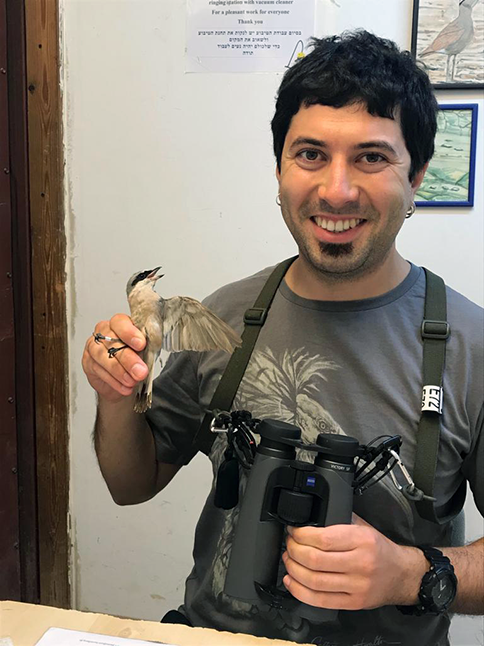
How cooperative is the behavior of the European Bee-eater during the breeding season? Directly after his master studies Liviu accompanied a research group of the Max Planck Institute for Ornithology in Seewiesen as an assistant on a Croatian island to answer this question. Among the local breeding European Bee-eaters Liviu and his colleagues discovered several birds which helped to feed offspring which were not their own. Globally only nine percent of all bird species show cooperative breeding behavior, mainly in tropical areas where food is available year-round. That is why the European Bee-eater is so special. Liviu observed how older siblings and neighboring birds helped to feed the newly hatched bee-eaters. They even recorded a female bird helping a breeding pair in another colony of the island.
Scientific insights of molecular biology
Directly after his time in Croatia he returned to the institute in Seewiesen to investigate the population dynamics of the non-native Rose-ringed Parakeet in Europe. During this project Liviu moved as a guest researcher to the lab of Professor Michael Wink at Heidelberg University. Here, while working with Michael Wink, he first came into contact with molecular biology in a project for gene expression of the Northern Wheatear.
With molecular techniques and genetic information a new world opened for Liviu. He started his PhD project under supervision of Professor Wink on population genetics of the Red-backed Shrike. The German Ornithologists’ Society partly funds this project. As illegal hunting of migrating birds in Egypt is seen as a big danger for the Red-backed Shrike, they are interested in discovering the natal origin of the shrikes using molecular techniques.
Out in the field Liviu collects feathers, takes blood samples and buccal swabs from the Red-backed Shrikes. For this job he has to be fast as his Red-backed Shrikes are breeding in the vineyards around Heidelberg. Vineyards are particularly problematic to localize the birds, because the shrikes stay well hidden among the broad leaves and numerous lines of the vineyards. With his sponsored ZEISS Victory SF 10×42 he localizes the birds very quickly. Thanks to the high magnification he even reads their leg rings, which he puts on birds he already examined.
Back in the lab Liviu extracts the DNA from the samples he collected. After sequencing the DNA, he is analyzing the order of nucleotides, which are the building elements of the DNA. He focuses on two small genes, which are recognized as very reliable population genetic markers. Taken together, these genes have 1,551 nucleotides. Not all birds are characterized by the same order of nucleotides. A certain order is called a haplotype. Via the haplotype Liviu can group birds of the same genetic background.
Among the so far 132 examined Red-backed Shrikes from 14 countries Liviu identified 76 haplotypes. That means a high genetic diversity. As many migratory bird species in Europe, the Red-backed Shrike’s high genetic diversity is a consequence of the ice ages from the past two million years. Back then, various populations got mixed in Southern Europe, when retreating from the cold. At present, despite the deplorable high trapping numbers on the flyway, the Red-backed Shrike has high chances of survival as a species, thanks to this genetic variety. Diseases and viruses will not endanger this species. For Liviu Parau, the scientist from the birdwatcher’s paradise, this is an important and reassuring finding.
MORE INFO ABOUT ZEISS VICTORY SF
RELATED NATURE BLOG ARTICLES
